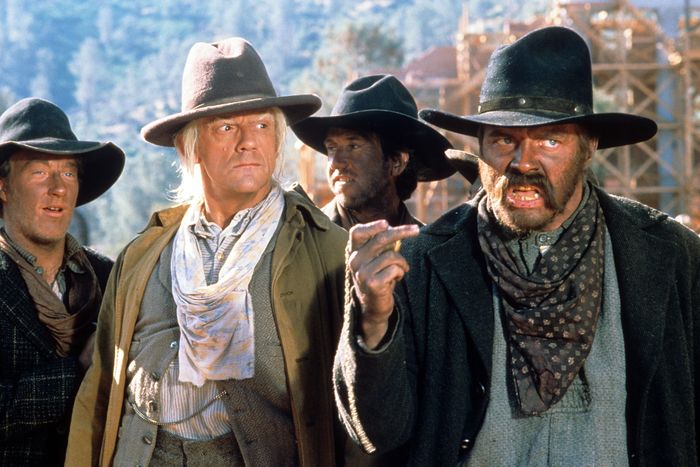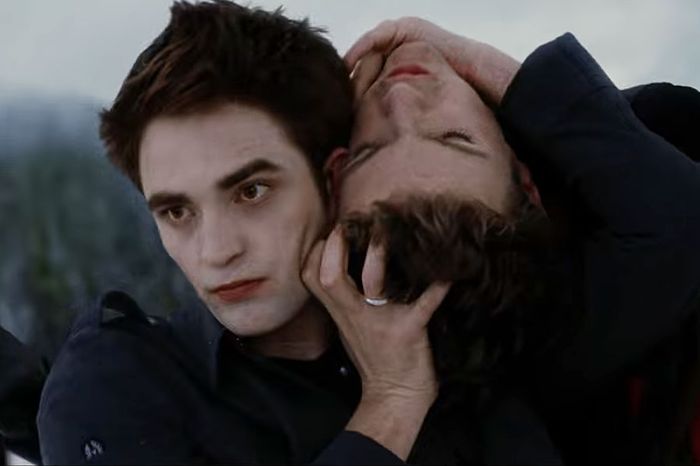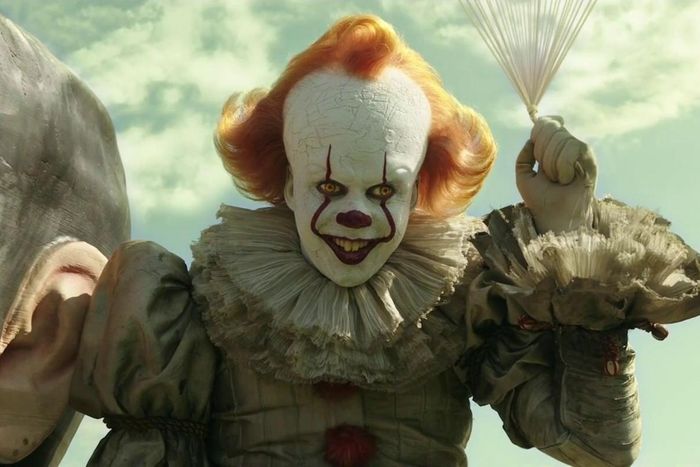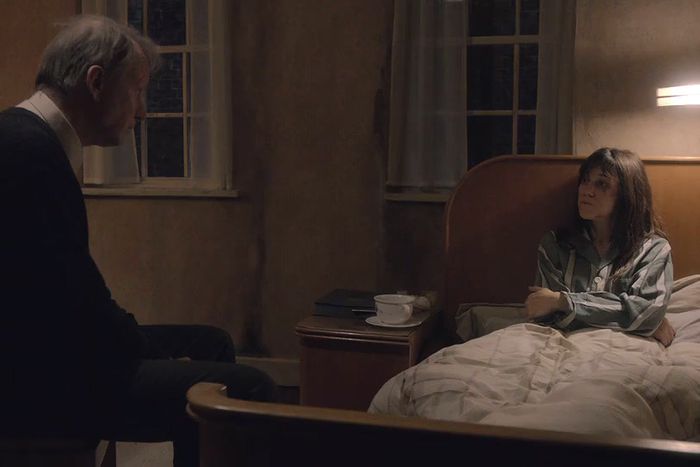
A confession: I got Dune’d by Spider-Verse.
Though I was semi-aware that this summer’s Across the Spider-Verse would be followed by a sequel, I was still taken aback when, just as the film seemed to be ramping up to its climactic showdown, it stopped in its tracks. The credits rolled, the lights went up. Drats! Another half-movie! It was the same unwelcome surprise that met Dune viewers who hadn’t caught the “Part One” in the title, unaware that the 2021 film only covered the first 50 percent of Frank Herbert’s novel.
Both Dune: Part One and Across the Spider-Verse are part of a hallowed movie tradition: the two-parter. The practice has a spotty history, born sometimes out of creative necessity and more often out of simple greed. In recent years, a few key patterns have emerged. Here’s a taxonomy of all the different ways Hollywood sells you two tickets to one story.
Parts two and three of a trilogy
The modern practice of shooting a film and its sequel back-to-back kicked off in the 1970s, when producer Alex Salkind employed the cost-saving technique on The Three Musketeers and The Four Musketeers — a surprise to the actors, who thought they were only making one movie — then again on Superman and Superman II. A decade later, the Back to the Future sequels introduced the method most commonly used today. Call it the instant-trilogy strategy: You follow up a hit movie with two sequels shot back-to-back, usually linked by a cliffhanger. Besides the cost efficiency, this practice also acts as a hedge against audience churn: Back to the Future Part III could hit theaters a mere six months after Part II. The third Spider-Verse film employed a similar production strategy, meaning fans won’t have long to wait for a resolution: Beyond the Spider-Verse opens next spring.
The instant-trilogy method also gave us Matrix Reloaded and Revolutions, Pirates of the Caribbean: Dead Man’s Chest and At World’s End, and Fifty Shades Darker and Freed. You’ll notice that, besides their title structure, what links most of these movies is that the first film in each series was a bigger success than expected. They’re the opposite of those ill-fated films — Pan, The Mummy, and more — whose whole raison d’être was to launch a cinematic universe.
Of course, not all films shot back-to-back count here, and films don’t need to be shot back-to-back to count, either. You could include Empire Strikes Back and Return of the Jedi, which were shot three years apart with different directors but are joined by a cliffhanger. Conversely, there’s Halloween Kills and Halloween Ends, which were green-lit together and originally intended to be shot back-to-back, but which each have their own individual plots. It’s all in the eye of the beholder: When you’re at the end of part two, do you feel as if you’ve just seen a completed work, or part of one?
The final chapters of a long-running franchise
At the start of the 2010s, the industry hit upon another technique to squeeze box office from its franchises. Why wrap up a series with one movie when you could wrap it up with two?
Warner Bros. blazed the trail by releasing its adaptation of the seventh Harry Potter book, The Deathly Hallows, in two parts, and when each of them grossed nearly a billion dollars worldwide, other studios followed suit. Twilight and The Hunger Games both split their final movies in twain to some success — though, as with Potter, it was hard not to notice the films’ suddenly glacial pacing. Other franchises were not so lucky. The Divergent films tried to pull the same trick on Allegiant, only to realize too late that both audience and cast had lost interest in the series; the second installment was never made, though producers unsuccessfully floated the idea of doing it as a TV show. Regardless, by the time of the Maze Runner movies, the practice was so established that director Wes Ball had to explicitly state ahead of time that the series would not end in a two-parter.
Outside the realm of Obama-era YA adaptations, results have been better. The Marvel Cinematic Universe concluded its Infinity Saga with the two-parter Avengers: Infinity War and Endgame, both of which were modest hits. And the Mission: Impossible franchise is currently scheduled to end with Dead Reckoning parts one and two (coming this summer and next, respectively), though considering that death-defying stunts may be the only thing keeping Tom Cruise alive, we’ll see if that’s truly the end.
Two-part adaptations of a single work
Killing your darlings is hard enough without every law of commerce shouting “NO!” at you. In adapting an unwieldy piece of art, some filmmakers (and their studios) prefer not to make hard cuts to fit a two-hour runtime when they can simply tell the story over two films instead. At least the recent It movies had an internal logic to the split, which mirrored the bifurcated structure of Stephen King’s novel. Others have been more arbitrary. While the detail and world-building of the 2021 Dune definitely benefited from a longer runtime, there’s no denying that Denis Villeneuve’s film just kind of … ends. Thankfully, those who prefer the speedrun approach can simply watch David Lynch’s Dune instead, which covers the whole novel in a breezy 137 minutes.
Most glaring was Peter Jackson’s Hobbit adaptation, which was split twice, turning a slim children’s book into a three-part, nine-hour monstrosity. Similar logic may be in play for the upcoming Wicked movies. In the hopes of separating America’s theater kids from their wallets, a tale that has been successfully told in a single sitting on Broadway will be divided in two — defying, if not gravity, then at least good taste.
An original film that’s too long
There’s a famous story about the creation of The Power Broker. Robert Caro’s original manuscript was over a million words long, so big it would have been physically impossible to bind it into a single volume. Rather than cut out whole swaths, Caro floated the idea of releasing the book in two parts. His editor, Robert Gottlieb, set him straight: “We might get people interested in Robert Moses once. We could never get them interested in him twice.”
That maxim does not apply to A-list directors. When every movie of yours is an event, anything worth releasing is also worth releasing twice. That’s why, rather than edit down Kill Bill and Nymphomaniac, respectively, Quentin Tarantino and Lars Von Trier decided just to release them in two parts. A similar thing happened with Steven Soderbergh’s Che, which the director split in two during the script phase. In Hollywood, the Judgment of Solomon is reversed: The best way to prove you really love a project is to cut it in half.









